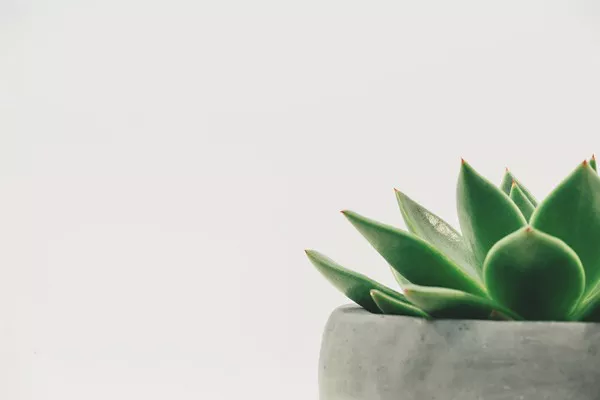Succulents, with their unique shapes and low-care requirements, have become popular choices for indoor and outdoor gardens. Planting succulents in moss adds a touch of natural beauty and enhances the visual appeal of these already captivating plants. Moss not only serves as an excellent alternative to traditional soil but also retains moisture, making it a suitable medium for succulent growth. In this comprehensive guide, we will explore the step-by-step process of planting succulents in moss, along with measures to ensure successful growth and long-term health of your moss garden.
1. Understanding the Benefits of Planting Succulents in Moss
Moisture Retention: Moss has exceptional moisture-retaining properties, ensuring succulents receive a consistent supply of water without the risk of overwatering.
Enhanced Aesthetics: Moss adds an enchanting and natural touch to your succulent arrangements, creating visually appealing and unique displays.
Low-Maintenance: Moss requires minimal care, making it an excellent choice for those seeking a hassle-free gardening experience.
Improved Root Development: Moss provides a soft and protective environment for succulent roots, promoting healthier growth.
2. Selecting Suitable Moss for Planting Succulents
Sphagnum Moss: Sphagnum moss is commonly used in gardening due to its high water retention capacity and ability to support root growth.
Peat Moss: Peat moss is another viable option that offers good water retention, but it is essential to consider its sustainability and environmental impact.
Reindeer Moss: Reindeer moss is a lichen variety often used for decorative purposes, but it can also serve as a charming accent in succulent arrangements.
3. Planting Succulents in Moss
Choose Suitable Containers: Select containers with drainage holes to prevent waterlogging. Shallow containers are ideal for succulents, as they promote better air circulation and prevent excess moisture buildup.
Prepare the Moss: Soak the moss in water until it becomes saturated but not dripping. Gently squeeze out any excess water to achieve the right moisture level.
Create a Moss Bed: Create a thick layer of moss at the bottom of the container, ensuring it covers the entire surface.
Planting Succulents: Make small holes in the moss where you wish to place the succulents. Carefully remove the succulents from their nursery pots, gently shake off excess soil, and position them in the moss bed.
Positioning the Succulents: Arrange the succulents according to your design preference, ensuring there is enough space between them to accommodate growth.
Secure the Succulents: Gently press the moss around the base of each succulent to anchor them securely in place.
Finishing Touches: Once all the succulents are securely planted, you can add decorative elements such as pebbles, driftwood, or other natural accents to enhance the aesthetics.
4. Essential Care Tips for Succulents Planted in Moss
Watering: While moss retains moisture well, it is essential not to overwater your moss garden. Water sparingly when the moss feels dry to the touch.
Indirect Light: Place your succulent moss garden in an area that receives bright, indirect light. Direct sunlight can scorch the moss and stress the succulents.
Avoid Waterlogging: Ensure excess water can drain freely from the container to prevent waterlogging, which can lead to root rot.
Air Circulation: Proper air circulation is crucial for both the moss and succulents. Avoid overcrowding the container, as this can hinder air circulation and encourage mold growth.
Moss Revival: If the moss begins to dry out or lose its lush appearance, mist it lightly with water to rejuvenate its vibrancy.
5. Moss Propagation for Sustainability
Harvesting Moss Spores: Mosses release spores that can be collected and used to propagate new moss plants.
Establishing New Moss Plants: Sprinkle collected moss spores over damp soil or moss and keep them consistently moist until new moss plants begin to grow.
6. Combining Different Moss Varieties for Visual Interest
Texture Play: Combine different moss varieties with varying textures to create an eye-catching and dynamic succulent moss garden.
Color Contrasts: Experiment with mosses of different shades and colors to add depth and contrast to your arrangement.
7. Creating Moss-Topped Succulent Arrangements
Moss as a Decorative Top Dressing: Use moss as a top dressing for potted succulents to add a touch of natural beauty and prevent soil erosion.
Creating Moss Living Walls: Moss can be used to create stunning living walls, adding a lush and organic backdrop to your succulent arrangements.
Conclusion
Planting succulents in moss offers a myriad of benefits, from enhanced aesthetics to improved root development. By following the step-by-step guide and essential care tips, you can create captivating succulent moss gardens that require minimal maintenance. Experimenting with different moss varieties, combining textures and colors, and incorporating moss in various arrangements can elevate your gardening experience and create a tranquil oasis of natural charm. With proper care and attention, your succulent moss garden will flourish, bringing joy and delight to your living spaces for years to come.


